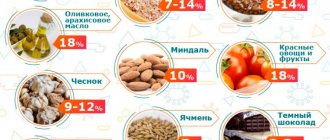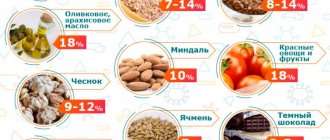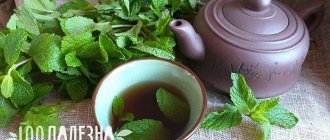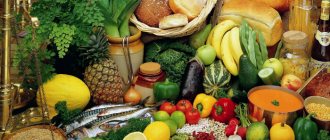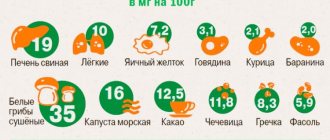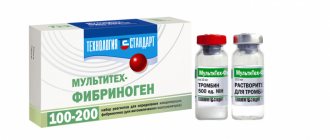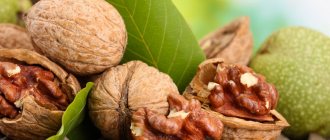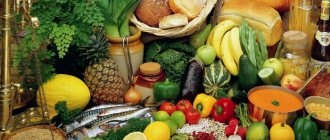Zinc is an essential microelement, a structural component of enzymes, proteins, cell receptors, biological membranes, necessary for the complete breakdown of proteins, fats and carbohydrates, the formation of genetic material of cells, and the metabolism of nucleic acids. Mention of the mineral is first found in the works of the Swiss alchemist K. M. Paracelsus under the words “zinken”, “zincum”, meaning “scar”. This is due to the fact that zinc metal crystals visually resemble needles. Currently, the trace element is designated under the symbol “Zn” and has 66 minerals. The most common of them are sphalerite, zincite, and franklinite. Zinc is present in almost all cells of the body, but it is most concentrated in bone, nervous and muscle tissues (60%).
Oysters
When determining the ranking of which foods contain zinc, scientists put oysters in first place.
This bivalve mollusk is the leader in microelement content - up to 5.5 mg per oyster. This means that 1 oyster provides 50% of the recommended amount of the mineral. These shellfish contain 7 calories per piece and contain vitamin B12 and selenium, which are necessary to stimulate the immune system. The amount of zinc in a product does not change depending on the method of preparation: you can eat fresh, cooked, or canned.
Crabs and lobsters
The second ones when compiling the list are which foods contain a lot of zinc, crustaceans, in particular lobsters and crabs. 100 g of Kamchatka crab contains 59% of the daily value of zinc or 6.5 mg. A small fried or boiled lobster provides 43% (4.7 mg) of the recommended daily value for the micronutrient. Seafood is an addition to any healthy diet that benefits cardiovascular health. But shellfish don't offer as many heart-healthy benefits as salmon and sardines.
Meat and poultry: the benefits of protein and zinc
What foods contain zinc: beef, pork and chicken (they are rich in more than just protein). For maximum health benefits, choose lean meats such as veal, pork tenderloin and boneless chicken breasts. 100g of sliced roasted skinless chicken breast provides 19% (2.13 mg) of the recommended daily value.
Chicken eggs also contain this substance - about 5% of the daily value (0.6 mg) per large egg.
Mushrooms and cabbage
If you are a vegetarian or vegan, there are many meat-free sources of zinc. Plant foods are healthy, they contain enough zinc, protein and other essential nutrients. Eating a healthy plant-based diet is associated with a lower risk of death among American adults, according to a study published in April 2021 in the Journal of Nutrition. Therefore, plant foods are no less important than animal foods.
One cup of chopped raw mushrooms contains about 3% (0.4 mg) of the daily value. Cabbage provides about the same amount (0.3 mg) per serving.
Adding these foods to your daily diet will provide an extra dose of zinc without consuming a lot of calories. 100 g of mushrooms contain only 20 calories, but a high amount of vitamin B riboflavin.
In addition to zinc, kale has vitamins A, K, B6 and C, plus calcium, potassium, copper and manganese, and only 33 calories per serving.
Daily norm
Zinc reserves in the body of adults weighing 70 kilograms are 1.5-3 grams, depending on the age and gender of the person, the presence of concomitant diseases, and the condition of the intestinal mucosa.
Moreover, 98% of the substance is concentrated inside cellular structures, and 2% in the blood serum. The daily requirement for zinc is:
- for girls up to six months – 2 milligrams;
- for boys up to 6 months – 3 milligrams;
- for children under 3 years old – 3-4 milligrams;
- for preschoolers from 4 to 8 years old – 5 milligrams;
- for adolescents from 9 to 13 years old – 8 milligrams;
- for girls from 14 to 18 years old – 9 milligrams;
- for boys from 14 to 18 years old – 11 milligrams;
- for women from 19 to 50 years old – 12 milligrams;
- for men from 19 to 50 years old – 15 milligrams;
- for mature males from 50 to 80 years old – 13 milligrams;
- for postmenopausal women from 50 to 70 years – 10 milligrams;
- for pregnant women – 14-15 milligrams;
- for nursing mothers – 17-20 milligrams.
The upper permissible level of zinc intake without consequences for the body is 25 milligrams. The need for a microelement increases with a protein deficiency in the daily menu, profuse sweating, intense exercise, the use of oral contraceptives, mental overload, and taking diuretics.
Legumes
Chickpeas, lentils and beans are good sources of this substance. Add hummus, edamame, and black beans to your meals to get extra zinc and other beneficial nutrients.
100 g of hummus contains 8% (0.89 mg) of the recommended daily value. Canned chickpeas provide 19% (2.07 mg) and lentils provide 11% (2.27 mg) per serving. Shelled edamame contains 19% (2.12 mg) and black beans - 18% (1.93 mg) of the micronutrient.
Legumes are relatively low in calories. This is an excellent food with low fat, high protein, vitamins, minerals, and plenty of dietary fiber.
Interaction with other nutrients
Absorption of organic zinc occurs throughout the intestinal tract, but most is absorbed in the jejunum. Interestingly, the mineral is better absorbed from food of animal origin than from a plant source. This phenomenon is explained by the presence of phytic acid in the second product, which forms insoluble salts with zinc ions. In addition, the degree of absorption of the element is affected by some compounds entering the body with food. Let's consider the compatibility of zinc and other substances.
- Organic vitamin A (beta-carotene, carotenoids) increases the bioavailability of zinc.
- Calcium, lithium and phosphorus ions (in small quantities) enhance the pharmacological properties of the mineral.
- Zinc and copper compete for absorption in the intestine, so Cu can cause Zn deficiency.
- Cadmium and lead reduce the concentration of the compound in the body, especially if there is a lack of protein in the diet.
- Simultaneous intake of zinc and calcium, copper, iron, manganese leads to a slowdown in the absorption of the first substance.
- Micronutrient deficiency aggravates the symptoms of vitamin E deficiency in the body.
- Tin slows down the absorption of zinc.
- Tetracycline preparations enhance the excretion of the microelement.
- Additional intake of folic acid against the background of zinc deficiency impairs the absorption of the mineral from food.
- Aspirin “washes out” the trace element from the body.
- When zinc and iron are consumed together, the absorption of the latter substance is reduced.
- The amino acids cysteine and histidine, found in meat, eggs and seafood, improve the absorption of the mineral.
Best materials of the month
- Coronaviruses: SARS-CoV-2 (COVID-19)
- Antibiotics for the prevention and treatment of COVID-19: how effective are they?
- The most common "office" diseases
- Does vodka kill coronavirus?
- How to stay alive on our roads?
To increase the absorption of zinc from food, especially soybeans, natural fermentation or fermentation processes are used.
Any nuts and seeds
A simple way to add a mineral to your diet and diversify the taste of your usual dishes.
- Add 30 g of pumpkin seeds or pine nuts to the salad to change the taste of the dish. They will add approximately 20% (2.17 mg) or 16% (1.8 mg) of the daily value.
- A handful of cashews, pecans or peanuts on top of yogurt or oatmeal provides about 15% of the daily value of the mineral. For example, 30 g of roasted cashews is 1.6 mg of inca.
- Chia seeds contain almost 12% (1.3 mg) of the daily value.
Whole grain
It is healthy for many reasons. Oatmeal provides fiber, vitamins, minerals and 27% (2.95 mg) of the Daily Value. The same amount of cooked brown rice provides 13 percent (1.38 mg), and a slice of whole wheat bread provides 5 percent (0.6 mg) of the micronutrient. Another whole grain with zinc is quinoa.
Vitamin compatibility chart
The table will help you become more familiar with the possible combination of useful components.
- “+” - good;
- “-” - bad;
- “#” is neutral.
| A | IN 1 | AT 2 | AT 5 | AT 6 | AT 9 | AT 12 | WITH | E | D | |
| A | A | # | # | # | # | # | — | # | + | # |
| IN 1 | # | IN 1 | # | # | # | # | # | # | # | # |
| AT 2 | # | # | AT 2 | # | + | + | — | # | # | # |
| AT 5 | # | # | # | AT 5 | # | # | + | # | # | # |
| AT 6 | # | # | + | # | AT 6 | # | # | # | # | |
| AT 9 | # | # | + | # | # | AT 9 | + | # | # | # |
| AT 12 | — | # | — | + | # | + | AT 12 | — | — | # |
| WITH | # | # | # | # | # | # | — | WITH | + | # |
| E | + | # | # | # | # | # | — | + | E | # |
| D | # | # | # | # | # | # | # | # | # | D |
Fortified Breakfast Cereals
Breakfast cereals are fortified with a number of vitamins and minerals, including zinc. So, 1 cup provides about 25% (2.8 mg) of the daily recommended amount of the mineral.
Read the label, pay attention to zinc, carbohydrates, added sugar. The vast majority of cereals are too sweet to be considered healthy, containing about 2 teaspoons of sugar per serving. Choose cereals that contain no more than 6 grams of sugar per serving and whole grains as the first ingredient on the list.
What organic processes is zinc involved in?
Zinc takes part in the following processes in the human body:
- energy metabolism (absorption of carbohydrate compounds);
- digestion of proteins (formation of collagen compounds);
- differentiation of immune system cells;
- hormone production (affects the functioning of the prostate, pancreas, thyroid glands, ovaries, adrenal glands, pituitary gland).
It also acts as an antioxidant, neutralizing free radicals, preventing the formation of cancer cells. Indirectly takes part in blood production and normalization of the proportions of plasma formed elements.
Milk and dairy products
In addition to being fairly high in calcium, milk and yogurt are tasty and nutritious sources of zinc. 1 cup of skim or low-fat milk provides 9% (1.02 mg) of the daily value, 1 cup of plain yogurt provides 22% (2.38 mg) or 20% (2.2 mg) if it is low-fat.
Add low-fat milk to porridge, oatmeal and smoothies, try yogurt with granola and fresh fruit.
Signs of Deficiency
In central Russia, people very often have a zinc deficiency. It is dangerous due to malfunctions of the nervous, visual, immune, musculoskeletal, and endocrine systems. Vision may deteriorate at dusk, sleep disturbances, headaches, and disturbances of smell and taste may occur. Finally, zinc deficiency increases the risk of various diseases, primarily diabetes.
Due to a lack of zinc, hair may fall out, nails may become brittle, and appetite and physical activity may decrease.
Doctor Skalny's method. What is hair analysis and why is it done? More details
Classic dark chocolate
The darker the variety, the better. 30 grams of chocolate containing 60 to 69% cocoa provides almost 7% (0.75 mg) of the recommended daily value of the mineral. The same serving of chocolate with 70-85% cocoa contains about 8% (0.9 mg).
It also helps protect heart and vascular health. When consuming chocolate, a decrease in blood pressure and an improvement in blood flow were noted, due to the flavanol content in cocoa. To control calories and sugar, stick to the norm - no more than 30 g per day.
